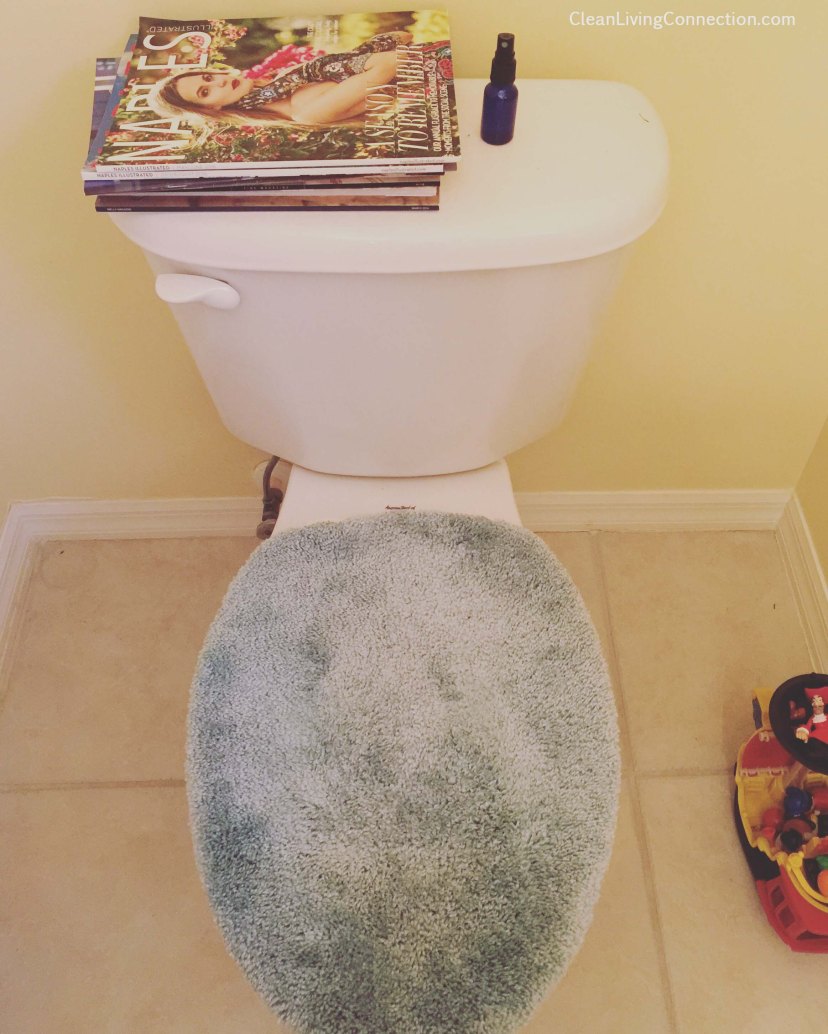Exactly How Fresh is That Air Freshener
What image goes through your mind when you think “fresh air?” Well I can probably guess what won’t go through your mind, and that is the bathroom. But probably not for the obvious reasons you are thinking. Most bathrooms are the very opposite of fresh, wouldn’t you agree? They actually may be much worse than you think. We like to mask stinky smells with more stinky smells plus toxic chemicals that may, very well, cause more harm than good.
Enter the world dominance of the air freshener. People love their air fresheners! So much so that according to Research and Markets, “the world air freshener market is estimated to garner $11.04 BILLION by 2020.” Holy cow that is a lot of money! I would imagine those companies wouldn’t appreciate my article quite as much as those looking to live a cleaner, more toxic free life.
Air fresheners are found in aerosols, sprays, solids, candles, and plug-ins and are there to make a bad smell a little better. But what about your health? What about your families health? Could it be making your health better or worse? Well according to studies in recent years they are most likely effecting you in some negative way. How fast can one actually run out of the bathroom without inhaling? Not fast enough, since those chemicals linger and they will drift out of the room and through your air systems. So how can you discern which product is most dangerous? Well here’s the kicker. There are no requirements for those air freshener companies to disclose ingredients. A few companies provide ingredient lists on their website in response to consumer demand, but the word “fragrance” may hide dozens of chemicals, many of which may never have been assessed for safety, and it’s perfectly legal. It turns out we live in a world where we must prove something is dangerous before they have to prove it is safe and harmless to the human body.
In 2008 a University of Washington study of top-selling laundry products and air fresheners found the products emitted dozens of different chemicals. All six products tested gave off at least one chemical regulated as toxic or hazardous under federal laws, but none of those chemicals were listed on the product labels. Anne Steinemann, a UW professor of civil and environmental engineering and public affairs, stated “I was surprised by both the number and the potential toxicity of the chemicals that were found.” Chemicals included acetone, the active ingredient in paint thinner and nail-polish remover; limonene, a molecule with a citrus scent; as well as acetaldehyde, chloromethane and 1,4-dioxane. For more details on the toxicity risk of 1,4-dioxane see here at the EPA. Steinemann also added, “nearly 100 volatile organic compounds were emitted from these six products, and none were listed on any product label. Plus, five of the six products emitted one or more carcinogenic ‘hazardous air pollutants,’ which are considered by the Environmental Protection Agency to have no safe exposure level.”
When EWG (the non-profit, 3rd party, Environmental Working Group) conducted more sensitive testing of the air freshener Febreze Air Effects as part of a 2009 study of cleaning supplies used in California schools, they detected a total of 89 airborne contaminants, including acetaldehyde. Another chemical to watch out for found in many air fresheners is called phthalates, which are endocrine disruptors. They are used because they make fragrances last longer, however, they are linked to problems of the reproductive system, including decreased sperm motility and concentration in men and genital abnormalities in baby boys. More recently they’ve also been linked to asthma and allergies. Synthetic musks are also a risks as they are linked to allergies and hormone disruption.
Are there any alternatives without the risk? Well you can start the fan when you first walk into your bathroom. Maybe there is a window you can open? How about a small HEPA air filter at least in your home. Be advised that “green” products may still contain toxic chemicals that carry a risk, and government regulation or definition for “green” is weak at best.
There is another alternative that you can customize to your own preference. That is making your own air spray using a small spray bottle, water and a couple drops of essential oils. Since I am not the one that enjoys making my own products, I can assure you it takes all of about 1-2 minutes. You can find spray bottles online, or at a local health food store, or even GNC. I enjoy peppermint in mine, sometimes a citrus essential oil, but virtually any of your favorite scents will work. I do advise that the brand be a very high quality oil and use an oil that is one of the less costly options. Look for Grade A, directly from farmer to bottle, versus a large distribution network from other countries and watch out for brands that make up their own ratings. Essential oils are powerful no matter what the use, so purity and quality is important.
So enjoy your next trip to the bathroom, water closet, loo, latrine, powder room, etc… a little more knowing that you are taking a small, safer, scented step to remove harmful products from your home and your families lives. – Jill, Founder of Clean Living Connection, LLC.









